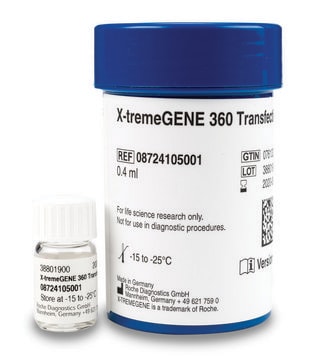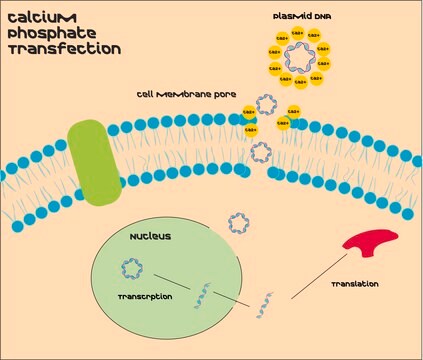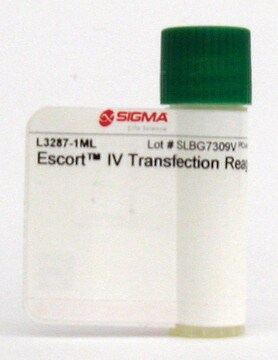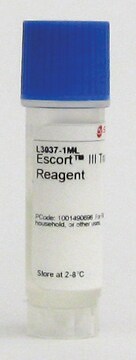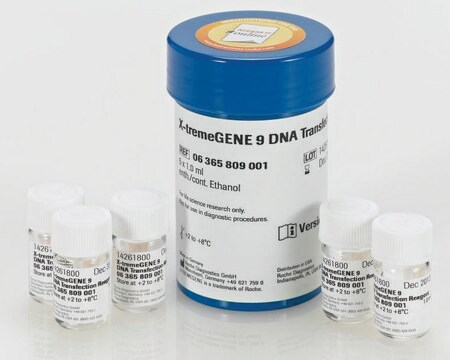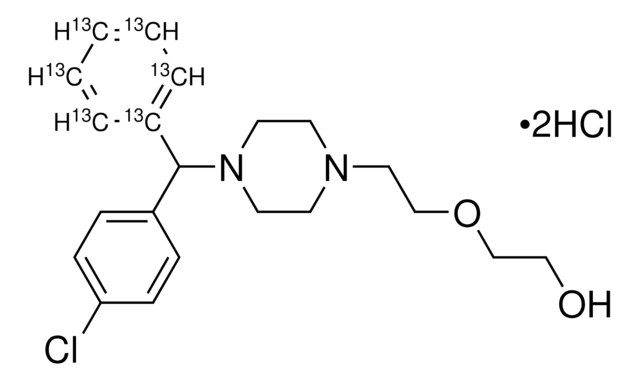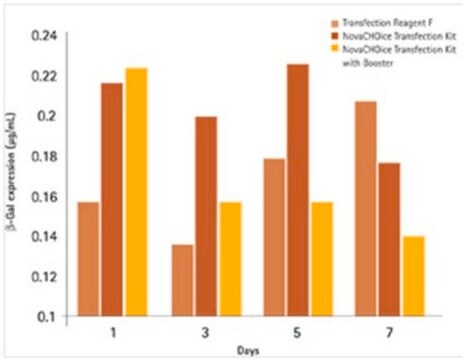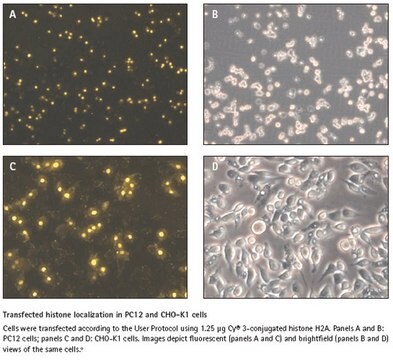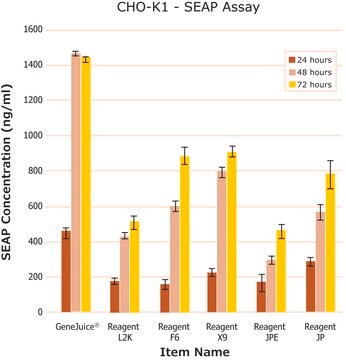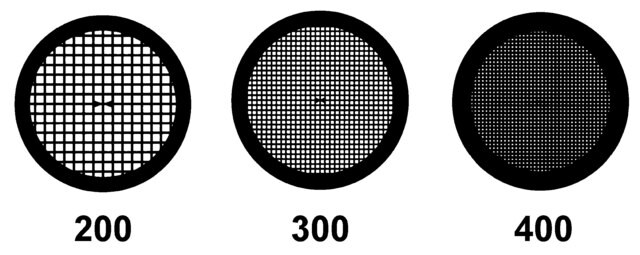NPT01
NeuroPorter™ Transfection Kit
Lipid formulation for nucleic acid transfections in neuronal and glial cells
Sinônimo(s):
NeuroPorter Transfection, Transfection Kit
About This Item
Produtos recomendados
grau
for molecular biology
Nível de qualidade
forma
dried film
uso
kit sufficient for 75-200 transfections
disponibilidade
available only in USA, Canada and EU
técnica(s)
transfection: suitable
temperatura de armazenamento
2-8°C
Descrição geral
Aplicação
- C6 glioma (human)
- Cortical neurons (rat primary)
- Dorsal Root Ganglion (DRG) cells (rat)
- NT2 neurons(human precursor cells)
- NT neurons (human differentiated cells)
- Subventricular Zone (SVZ) cells (mouse)
- White matter cells (mouse)
Características e benefícios
- Optimized for primary neurons, glial cells, and cultured neural cell lines
- Very low toxicity with no neuro-degeneration or dendrite withdrawal
- Efficient DNA delivery primary neurons, glial cells, and cultured neural cell lines
- Fast and easy to use compared to other methods
- Compatible with both serum and serum-free transfection protocols
Componentes
1.5 mL Hydration Buffer H9036
7.5 mL DNA Diluent D1941
Atenção
Princípio
Informações legais
produto relacionado
Código de classe de armazenamento
12 - Non Combustible Liquids
Ponto de fulgor (°F)
Not applicable
Ponto de fulgor (°C)
Not applicable
Certificados de análise (COA)
Busque Certificados de análise (COA) digitando o Número do Lote do produto. Os números de lote e remessa podem ser encontrados no rótulo de um produto após a palavra “Lot” ou “Batch”.
Já possui este produto?
Encontre a documentação dos produtos que você adquiriu recentemente na biblioteca de documentos.
Os clientes também visualizaram
Artigos
Transfection is the introduction of DNA, RNA, or proteins into eukaryotic cells and is used in research to study and modulate gene expression. Thus, transfection techniques and protocols serve as an analytical tool that facilitates the characterization of genetic functions, protein synthesis, cell growth and development.
This brief webinar provides an overview of what transfection is and the methods that are used to introduce DNA or RNA into eukaryotic cells.
Conteúdo relacionado
Browse our convenient transfection reagent selection guide to match the best reagent for your specific cell line and application needs.
Nossa equipe de cientistas tem experiência em todas as áreas de pesquisa, incluindo Life Sciences, ciência de materiais, síntese química, cromatografia, química analítica e muitas outras.
Entre em contato com a assistência técnica